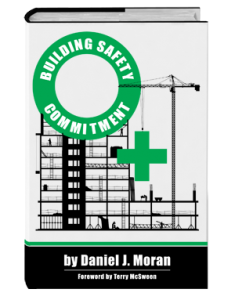“Dr. Moran’s training of Corrosion Monitoring Services utilizing ACT for Safety has dramatically changed our company. ACT for Safety changed our company almost immediately. Within a week of Dr. Moran’s training our crews decided to have two safety meetings every shift.” —Steve Turner, CEO Corrosion Monitoring Services
Pickslyde excels and 21st Century Behavior-Based Safety and Building Safety Commitment.21st Century Behavior-Based Safety is a scientifically proven method for reducing incidents and injuries in the workplace. Over the last thirty years, behavior-based safety has been implemented in thousands of companies worldwide, and sharpened through scientific investigations. Safety engineers and behavioral scientists have learned a great deal about making behavior-based safety more efficient and effective over the decades. Because science is a systematic enterprise of building knowledge, behavioral scientists have accumulated a great deal of applicable information for creating stronger safety cultures by promoting safer actions, addressing environmental hazards, and improving productivity. Pickslyde Consulting’s 21st Century Behavior-Based Safety capitalizes on the latest findings, and creates solutions for accelerating safety outcomes in organizations. The 21st Century Behavior-Based Safety process will make a critical impact on the actions of workers at every level of the organization:
|
![]()
Modern science has given us cutting-edge tools and increased knowledge for improving safety, such as high-tech personal protective equipment and more effective management systems. However, investments in the best flame resistant clothing, air-purifying respirators, and chemical resistant gloves are only useful if people make a commitment to wearing them. Similarly, expertise in proven leadership practices can help you be a better leader but again, they are only beneficial if you make a commitment to use them. Behavior-based safety processes have been proven effective in reducing incidents and injuries but their effectiveness also requires an essential ingredient: commitment.
Commitment is a critical contributor to safety programs at all organizational levels. For optimal performance, front-line employees need to commit to following through on their training and wearing PPE, while managers must commit to overseeing the safety process and promoting safety as the key organizational value. In fact, if you take close look at industry research, it is clear that those leaders who commit to the stewardship of the entire safety process have the most impact on safety performance.
Dr. Moran’s book, Building Safety Commitment, discusses proven ways of increasing people’s dedication to safety in the workplace.



